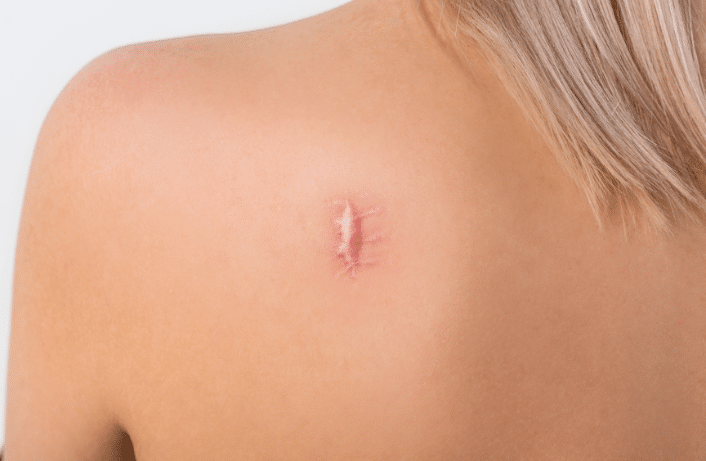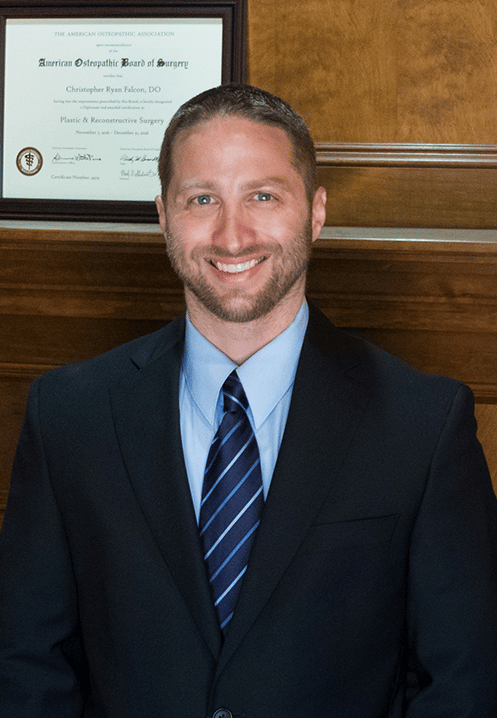
Understanding Keloid Scars: Causes, Treatment Options, and Prevention
Posted on July 25, 2023
A keloid scar is an unusual formation of scar tissue that can be both aesthetically displeasing and cause discomfort. But how do they form, what causes them, and how do you prevent them from forming? Let’s take a look at the answers to these questions and more.
What Are Keloid Scars?
Keloid scars are abnormal scar tissue formations extending beyond the initial wound’s boundaries. They are characterized by their raised, firm, and reddish appearance. Unlike normal scars that gradually fade, keloids grow progressively and do not disappear naturally.
It is important to distinguish keloid scars from other types of scars, such as hypertrophic scars, which are similar in appearance but do not extend beyond the original wound boundary.
Causes and Risk Factors
Keloid formation is triggered by injury or trauma to the skin, such as surgical incisions, burns, acne, or body piercings. However, not everyone who experiences skin trauma will develop keloid scars, indicating there may be a genetic predisposition.
The exact cause of keloid formation is still not fully understood, but research suggests that an abnormal immune response involving inflammation and excessive collagen production may play a significant role.
Common Sites for Keloid Formation
Keloid scars can develop on any part of the body, but certain areas are more prone to their formation. The earlobes, chest, cheeks, and shoulders are commonly affected. In these areas, keloids may arise due to the tension on the skin or the constant movement of joints, which can disrupt the healing process.
Treatment Options
Treating keloid scars can be challenging, but various treatment approaches can be explored. It is essential to consult with a dermatologist and plastic surgeon to determine the most suitable treatment option for you. Some of the most commonly used methods include:
Surgical Excision
Surgical removal of the keloid scar, followed by proper wound closure techniques, can significantly improve the appearance of the scar.
Corticosteroid Injections
Steroids injected into the keloid can help flatten and reduce its size by suppressing inflammation and collagen production.
Silicone Gel Sheets
Applying silicone gel sheets to the keloid can help flatten and soften the scar.
Laser Therapy
Various laser treatments, such as pulsed dye laser or fractional laser, can effectively flatten the scar.
Lifestyle Modifications for Keloid Prevention
While completely preventing keloid formation may not be possible, certain lifestyle modifications can help minimize the risk. These include:
Proper Wound Care
Cleaning wounds properly, using sterile techniques, and avoiding excessive tension on the skin can promote better healing and reduce the likelihood of keloid formation.
Managing Inflammation and Infection
Promptly treating any inflammation or infection in wounds can help prevent the development of keloid scars.
Scar Massage and Moisturization
Gently massaging the scar tissue and applying moisturizers can improve blood circulation and reduce the risk of keloid formation.
Prevent Skin Injury
Take precautions to avoid cuts, burns, and trauma to maintain healthy skin.
Schedule A Consultation
Keloid scars can significantly impact a person’s self-esteem and quality of life. Understanding the causes, treatment options, and prevention methods for keloid scars is essential for anyone seeking to manage or avoid their formation.
If you’d like to learn more about keloid scars and ways to treat them, scheduling a consultation at Falcon Plastic Surgery is a great first step. Dr. Falcon will do a physical exam of the area, discuss your concerns, and then build a treatment plan for you.
To schedule a consultation today, call our Natrona Heights or Monroeville, PA offices at 724.226.3900 or use our online scheduling form.

Who are we?
Falcon Plastic Surgery, located in Monroeville and Natrona Heights, PA, provides facial, breast, and body contouring through plastic surgery and med spa treatments. Dr. Christopher Falcon, owner of Falcon Plastic Surgery, purchased the practice from his father in 2017. Dr. Falcon has been a practicing surgeon for 15 years.
Learn MoreA Family-Owned Practice Built on Trust And Integrity
For more information on our natural approach to plastic surgery, please fill out the contact form or call our office.

